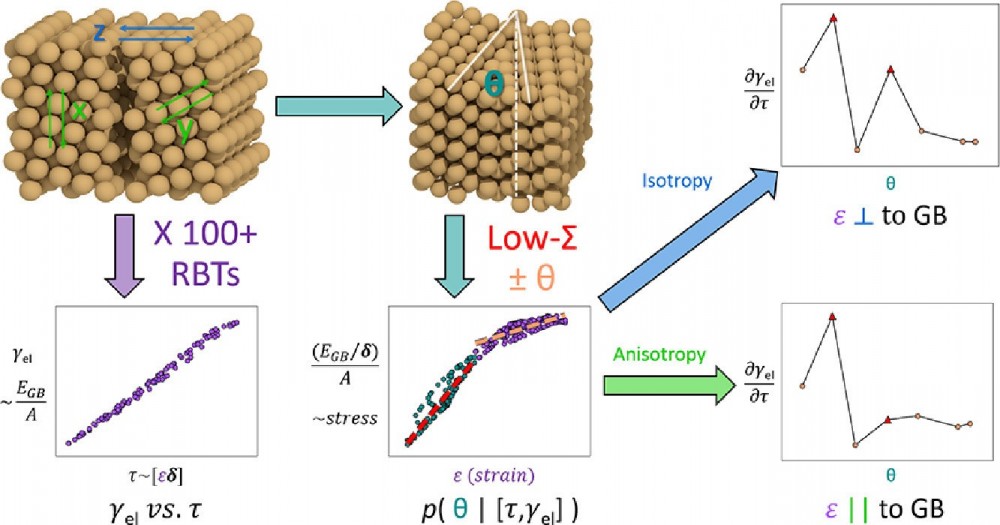
연구
Research Outcome
미래를 창조하는 포스텍 화학공학과
Universal prediction of strain footprints via simulation, statistics, and machine learning: low-Σ grain boundaries
- Title of paper
- Universal prediction of strain footprints via simulation, statistics, and machine learning: low-Σ grain boundaries
- Author
- [한정우교수 연구실] 인공지능과 시뮬레이션을 통한 결정립계의 인장 연구
- Publication in journal
- Acta Materialia 211 (2021) 116850.
- Publication date
- 20210601
[Abstract]
Interface engineering usually imposes a trade-off between catalytic activity, product selectivity, and property tunability, facilitating multiple product yields. Due to their structural disorder, metal grain boundaries (GBs) can be constructed to satisfy all of these conditions. Though experiments show GB catalytic footprints are determined by dislocation-induced elastic strain, the atomistic structural and energetic origins of GB catalytic performance are not currently known. In former models solely reviewing metastable GBs defined by macroscopic degrees of freedom (DOFs), exceptional low-Σ GBs anticipated by the coincident site lattice model cannot be consistently discerned. Herein, a structure-energy correlation linking changes in atomistic properties to physical models is developed, distinguishing exceptional GBs from unexceptional high-angle GBs over structural DOFs. This work constructs particular GB elastic responses by varying three microscopic DOFs, comparing low-Σ distinguished and other GB responses via a directed statistical approach. Such elastic properties successfully distinguish low-Σ GBs from high-angle grain boundaries (HAGBs) by their strain-related footprints without failure of a single unique GB structure and composition combination. A priori application of machine learning classification is completed using metastable GB and elastic response related properties. This classification not only validates distinguished strain footprints, but also identifies GB subgroups with footprints unexpected by former models.
DOI: doi.org/10.1016/j.actamat.2021.116850
Link: https://www.sciencedirect.com/science/article/pii/S1359645421002305




